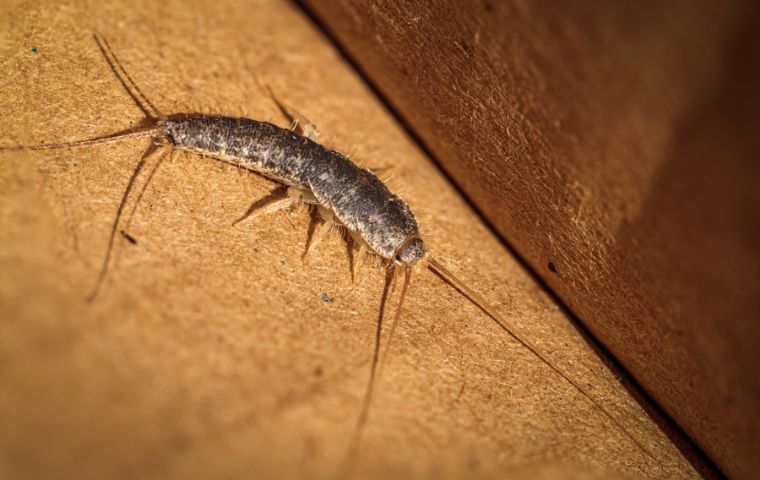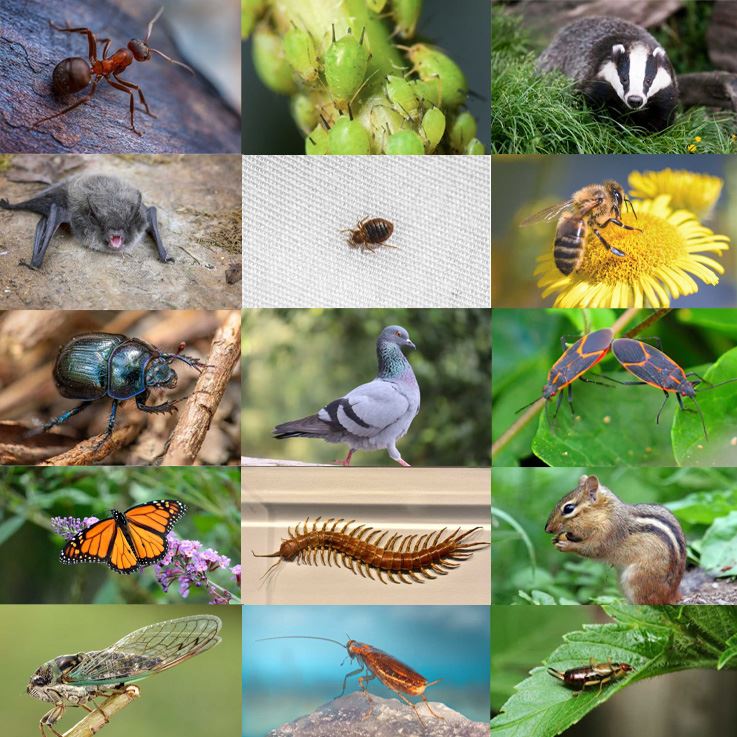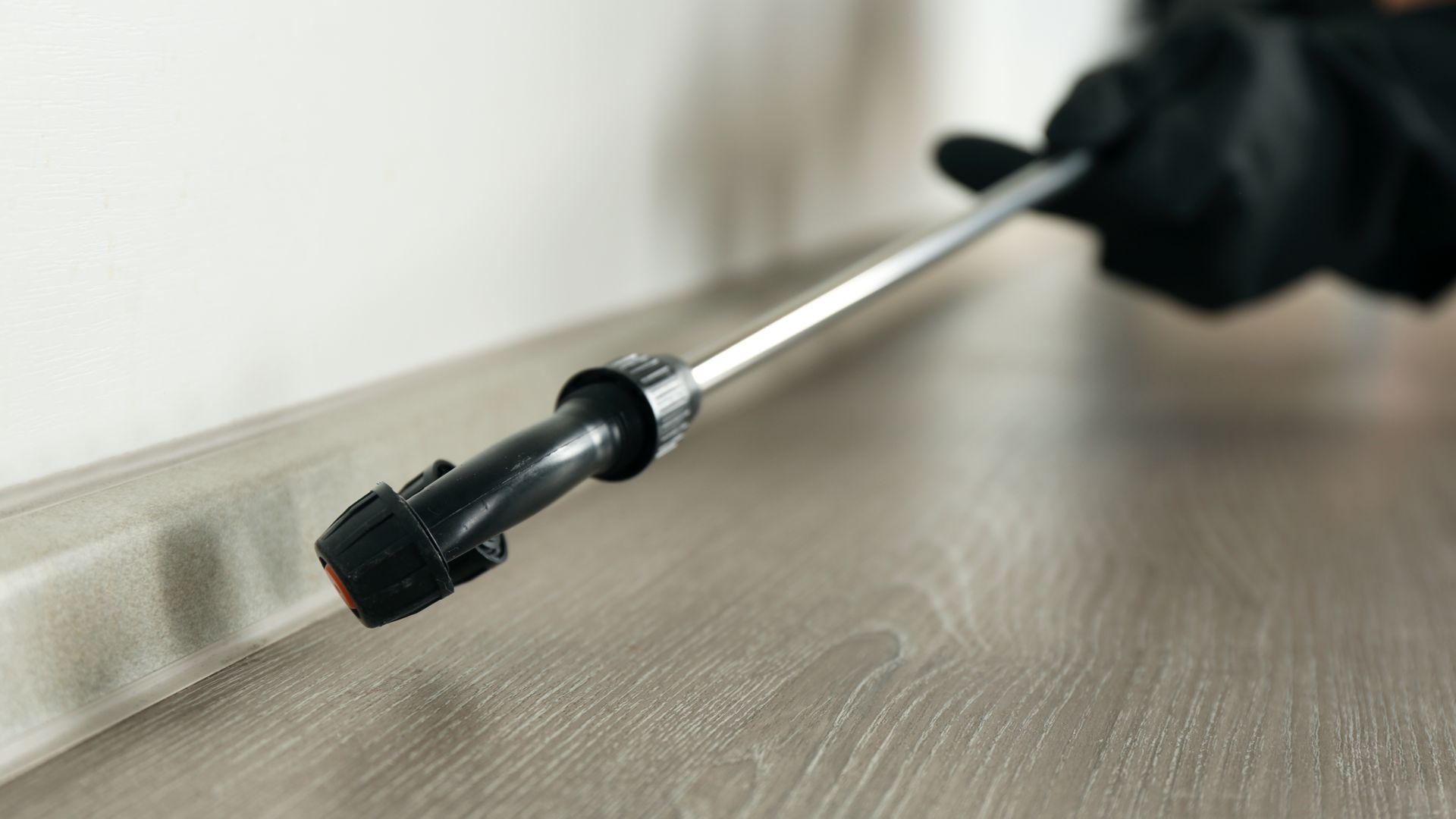
Silverfish
What Are Silverfish?
Silverfish are small, wingless insects known for their silvery-gray, metallic appearance and fish-like movements. They typically measure about ½ to ¾ inch long and have elongated, flattened bodies with three bristle-like appendages at the rear. These nocturnal pests thrive in dark, humid environments such as basements, bathrooms, and attics. They feed on carbohydrates like paper, glue, and starches, often damaging books, wallpaper, and fabrics. While they do not pose health risks to humans, their presence can be a nuisance and lead to property damage over time.
Are Silverfish Harmful?
Silverfish (Lepisma saccharina) are generally considered nuisance pests rather than directly harmful, but they can still cause various problems in homes and businesses. Here are some key ways in which silverfish can be considered harmful:
Property Damage
Silverfish feed on starchy materials and proteins, which can lead to significant damage over time. They may:
- Destroy Paper Products – Books, wallpaper, important documents, and stored paper materials can be eaten or stained by silverfish.
- Damage Clothing & Textiles – Fabrics like cotton, silk, and linen, as well as synthetic blends, can be chewed on, leading to holes and deterioration.
- Consume Glue & Adhesives – Wallpaper glue, book bindings, and cardboard storage boxes can be damaged as silverfish feed on adhesives.
Food Contamination
Silverfish can invade pantries and consume dry foods such as flour, cereals, rice, oats, and sugar. While they don’t transmit diseases, their presence in food can make it unappetizing and lead to contamination through their droppings, shed scales, and exoskeletons.
Allergens & Indoor Air Quality Issues
Silverfish shed their exoskeletons as they grow, leaving behind molted skins and waste. These remnants can contribute to dust buildup in the home and may trigger allergies or respiratory irritation in sensitive individuals, especially those with asthma.
Indication of Moisture Problems
While silverfish themselves may not cause structural damage, their presence often indicates excessive humidity, leaks, or poor ventilation. If left unaddressed, this moisture can lead to mold growth and attract other pests such as termites or cockroaches.
Psychological & Aesthetic Concerns
Silverfish are fast-moving and tend to appear unexpectedly, which can startle homeowners. Their presence in bookshelves, closets, or kitchen areas can create an impression of uncleanliness, making them particularly problematic for businesses such as hotels, libraries, and museums.
Learn more: Do Silverfish Bite?
Types of Silverfish
There are several types of silverfish, each with slight variations in appearance and habitat preferences. The most common include:
- Common Silverfish (Lepisma saccharina) – The most widespread species, found in homes worldwide. It has a silvery-gray, elongated body and prefers humid, dark environments like basements and bathrooms.
- Four-Lined Silverfish (Ctenolepisma lineatum) – Slightly larger than common silverfish, with four dark lines running along its body. It prefers dry environments and is often found in attics or libraries.
- Gray Silverfish (Ctenolepisma longicaudata) – A larger species with a darker, grayish-brown appearance. It thrives in dry, warm areas such as attics, storage rooms, and libraries.
- Firebrat (Thermobia domestica) – Similar in appearance to silverfish but with a mottled, brownish coloration. Firebrats prefer high temperatures (above 90°F) and are often found near ovens, water heaters, and insulation.
While all these species share similar feeding habits and behaviors, their environmental preferences vary, influencing where infestations occur.
Silverfish Appearance
Silverfish are small, wingless insects with a distinctive teardrop-shaped body that tapers at the end. They are usually between ½ to ¾ inches long and have a silvery-gray or metallic appearance due to their fine, shiny scales. Their bodies are covered in tiny, overlapping scales that give them a fish-like shimmer, which is how they got their name.
Silverfish have long, thread-like antennae on their heads and three tail-like appendages (called cerci) extending from their rear, giving them a bristle-like appearance. They move quickly in a wriggling, fish-like motion. Their bodies are soft, flat, and somewhat segmented, allowing them to squeeze into tiny cracks and crevices.
Because they are nocturnal and prefer dark, damp environments, silverfish are often found in basements, bathrooms, attics, and areas with high humidity. They are known for feeding on starches, paper, glue, fabrics, and other organic materials, which can make them a nuisance in homes.
Learn more: What Do Silverfish Look Like?
Silverfish Habitat
Silverfish thrive in dark, damp, and humid environments, so you're most likely to encounter them in areas with high moisture and limited airflow. Common places where silverfish are found include:
Attics & Storage Areas
- Inside cardboard boxes or old books
- Among stored clothing, wallpaper, or fabric
- Near insulation materials
Basements & Crawl Spaces
- Dark corners and crevices
- Near stored boxes, books, or old newspapers
- Along baseboards and behind furniture
Bathrooms
- Around sinks, bathtubs, and showers
- Inside cabinets and under baseboards
- Near leaky pipes or drains
Laundry Rooms
- Behind washing machines and dryers
- In lint buildup and fabric piles
Kitchens & Pantries
- Inside cabinets, especially those with flour, cereal, or paper packaging
- Around plumbing and under sinks
- Near stored dry goods, as silverfish feed on starches
Closets & Bedrooms
- Inside drawers with clothing or fabric items
- Behind wallpaper or peeling paint
- Near stored documents or photo albums
Since silverfish are nocturnal, they often go unnoticed until you find signs of their presence, such as small holes in paper, fabrics, or books, along with tiny pepper-like droppings. If you’re dealing with a silverfish problem, controlling humidity levels and sealing cracks can help prevent infestations.
Silverfish Diet
Silverfish are omnivorous and primarily feed on materials that contain starch and carbohydrates. Their diet includes a variety of organic substances, particularly those found in homes and other indoor environments. Common things silverfish eat include:
Paper Products
- Books: Paper, bindings, and glue
- Magazines: Pages and ink
- Newspapers: The paper and any adhesive used in the print
- Wallpaper: The paste used to apply wallpaper and sometimes the paper itself
- Cardboard: Particularly when it’s used to package food or other items
Fabrics
- Clothing: Particularly natural fibers like cotton, linen, or wool, though they may also feed on synthetics like rayon if they are stained with food or other organic matter
- Bedding: Like sheets or blankets, especially if they have traces of food or other organic material
Food Sources
- Dry Food: Cereal, flour, sugar, pasta, and other dry food items, often found in pantries
- Pet Food: Especially dry kibble or grain-based products
- Starchy Substances: Items like potatoes or other organic starches left unattended
Glue and Adhesives
- Glue in Books or Wallpaper: Silverfish are attracted to the starches in adhesives used in book bindings, wallpaper paste, and other items
Organic Matter
- Dead Skin Cells: Silverfish are known to scavenge on the skin flakes that humans shed, which can accumulate in dust.
- Mold: If there’s a damp, moldy area, silverfish may also consume the mold itself, as it can contain organic matter that they can digest.
Dead Insects
- While silverfish prefer plant-based materials, they may also feed on dead insects, particularly other small pests.
To prevent silverfish infestations, it’s important to reduce food sources by sealing food packages, cleaning up crumbs, and storing items properly.
Learn more: What Do Silverfish Eat?

Silverfish Life Cycle
The life cycle of silverfish consists of three main stages: egg, nymph, and adult. Silverfish undergo incomplete metamorphosis, meaning they don’t have a pupal stage like some insects (such as butterflies). Instead, silverfish develop through gradual changes as they grow.
Egg Stage
- Duration: A few days to several weeks, depending on environmental conditions
- Eggs are laid by the female in secluded, dark areas where moisture is present. The eggs are typically laid in cracks, crevices, or hidden spaces such as behind baseboards, under furniture, or in attics.
- Silverfish eggs are small, white, and oval-shaped, and they are often laid in groups. They are coated with a protective layer that helps shield them from environmental threats.
Nymph Stage (Immature Stage)
- Duration: Several months to 3 years, depending on the availability of food and environmental conditions.
- Once the eggs hatch, nymphs (the immature form) emerge. Nymphs resemble small adults but are pale and underdeveloped. They are wingless, soft-bodied, and usually translucent or white.
- As they grow, nymphs will molt (shed their exoskeleton) several times. The number of molts varies, but silverfish typically molt 20-30 times before reaching adulthood. Each molt brings the nymph closer to the size and appearance of a mature silverfish.
Adult Stage
- Duration: Silverfish can live for 2 to 8 years as adults, depending on environmental conditions.
- Once silverfish reach adulthood, they can reproduce, completing the cycle. Adults retain their fish-like, silvery appearance and continue to molt, but at a reduced rate.
- Adult silverfish are not capable of flight but are extremely fast and capable of darting around their environment, particularly in dark, damp spaces.
- Reproduction: Silverfish are known to be prolific breeders. Mating occurs through a process called "sperm transfer", where the male silverfish deposits a sperm packet, which the female picks up. The female may then lay several eggs, starting the cycle again.
The life cycle of silverfish is closely tied to their environment, with higher humidity and abundant food sources facilitating faster development. In ideal conditions, silverfish can reproduce year-round, leading to rapid infestations.

Hear From Our Happy Customers
-
"Professional & Considerate"
I’m pleased with Miche services. Jarvis came today. Professional and considerate. Thank you!
- Judy B. -
"Exceeds Expectations"
I can’t say enough positive things about this company... The tech that came out, Jarvis went above and beyond my expectations. Thank you guys, I will continue using your services.
- Jake M. -
"Wonderful Service"
Wonderful service. Jarvis is great. Took care of everything I needed. Thank you!
- Henry P. -
"Great Communication"
Tech was on time, communication was great, and he accommodated my needs.
- Alonzo W. -
"Fantastic & Patient"
Jarvis was fantastic and patient. He answered my questions with an in-depth explanation and addressed all of my areas of concern. Would love for him to be my assigned tech going forward. Well done!
- Yonnette M. -
"Very Knowledgeable"
The tech that arrived was courteous, professional, and very knowledgeable. He was Great.
- Uerial I.



